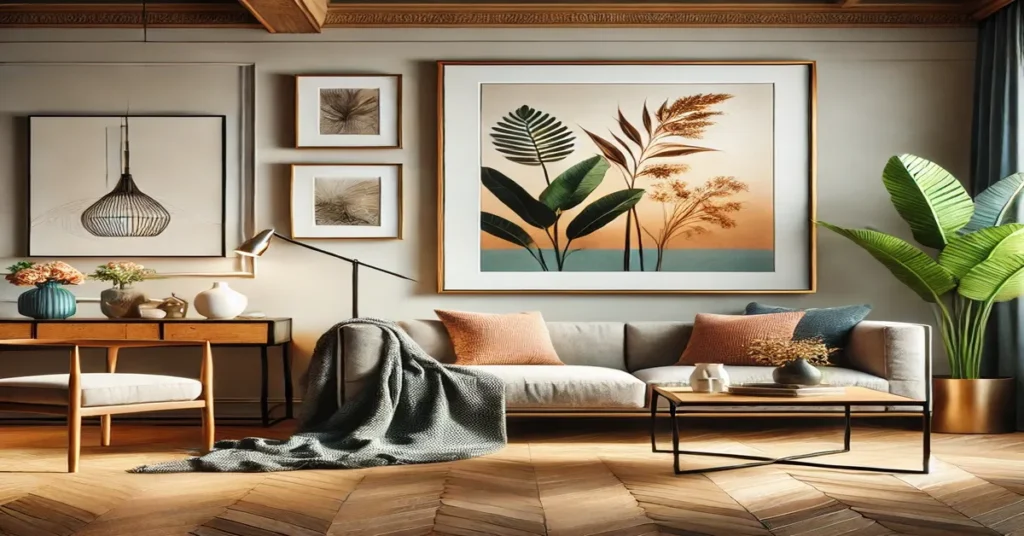When it comes to showcasing memorable photographs, vibrant artwork, or special posters, choosing the right frame is crucial. A 20×30 frame is ideal for larger prints and can add elegance to any room, whether in a home, gallery, or office. This size frame provides ample space to highlight intricate details, capture a sense of depth, and make a powerful visual statement. However, finding the right 20×30 frame involves more than just picking one that looks good. You need to consider factors like materials, style, glass type, matting options, and the space where it will be displayed.
In this comprehensive guide, we’ll dive into the details of 20×30 frames, including their features, materials, design options, and best practices for displaying large-format artwork and photos. We’ll also cover different framing options, tips for maintaining frames, and answer some frequently asked questions to help you make an informed choice. Whether you’re an artist, a photographer, or just someone looking to decorate your space, this guide will help you find the perfect 20×30 frame for your needs.
Why Choose a 20×30 Frame?
A 20×30 frame is designed for large prints, photos, and artworks. This size is particularly popular for photography, artwork reproductions, movie posters, travel memories, and family portraits. Here are a few reasons why you might choose a 20×30 frame:
- Enhancing Visual Impact: Larger frames like 20×30 draw attention and make an impact in any room, allowing viewers to appreciate details from a distance.
- Perfect for Special Occasions: This size is often used for wedding photos, graduation portraits, or commemorating special events because it emphasizes the subject and creates a focal point.
- Versatility in Design: A 20×30 frame can suit various decor styles, from minimalist and contemporary to rustic and classic, depending on the material and color chosen.
- Ideal for Wall Art: This frame size is large enough to create a standalone statement piece on a wall or work as part of a gallery wall for a balanced look.
Types of 20×30 Frames
When it comes to selecting a 20×30 frame, you have several options in terms of material, style, and customization. Here’s a breakdown of the most common types:
1. Material Choices
The material of a frame can significantly affect its aesthetic appeal and durability. Here are the primary material options for 20×30 frames:
- Wood: Wood frames are a classic choice, offering durability and a wide variety of finishes, from natural wood to painted finishes. They can be smooth or textured, fitting seamlessly into traditional or rustic spaces.
- Metal: Metal frames are sleek, lightweight, and perfect for a modern or industrial look. They come in a variety of finishes like brushed silver, matte black, and gold.
- Acrylic: Acrylic frames are lightweight, shatter-resistant, and versatile. They work well in contemporary and minimalist designs but may be less durable than wood or metal over time.
- Composite or MDF (Medium Density Fiberboard): Composite frames mimic wood but are often more affordable. They are ideal for budget-conscious buyers and come in various colors and finishes, though they may not be as durable as solid wood or metal.
2. Glass and Glazing Options
The glass or glazing you choose for a 20×30 frame can protect your artwork or photo and affect its visual quality. Here are the primary types:
- Standard Glass: Traditional glass offers clear visibility but can be heavy and prone to glare. It is also more fragile, which can be a consideration for larger frames.
- Acrylic or Plexiglass: Acrylic is lighter than glass and shatter-resistant, making it a good choice for large frames. However, it can scratch more easily.
- Non-Glare Glass: This type of glass has a matte finish that reduces glare, ideal for frames placed near windows or bright lights.
- UV-Protective Glass: UV glass filters harmful rays to prevent artwork or photos from fading. This is particularly beneficial for valuable or irreplaceable prints.
3. Matting Options
Matting is the border or “picture frame within a frame” that separates the artwork from the frame’s edge. For a 20×30 frame, matting can enhance the appearance and give a more polished look. Here are a few common matting choices:
- Single Mat: A single mat adds a clean, elegant touch, allowing the artwork to stand out while providing a subtle border.
- Double Mat: This involves two layers of matting, often in contrasting colors, creating a more dynamic look. Double mats can add depth and enhance the visual impact of the artwork.
- No Matting: For a full-bleed look, some prefer not to use matting, especially with modern frames where the artwork or photo takes up the entire frame.
4. Color Options
When choosing the color of your frame, consider the artwork and the decor in the space. Common color options include:
- Black: A black frame is versatile, sleek, and modern, complementing most artworks and photos without overpowering them.
- White: White frames have a clean and minimalistic appearance, ideal for contemporary spaces. They also work well in gallery walls.
- Natural Wood: Natural wood frames add warmth and texture, making them suitable for traditional or rustic decor.
- Metallic: Metallic finishes like silver, gold, or bronze are often used for a touch of elegance and sophistication.
- Bold Colors: Some prefer bold, colorful frames for a more artistic, playful look, especially when the artwork or photograph includes similar hues.
Displaying a 20×30 Frame in Your Space
Finding the right place to display a large 20×30 frame is essential for maximizing its impact. Here are some tips on where and how to display a 20×30 frame:
- Living Room: Place the frame above the couch or a console table. For a single frame, center it for balance. If you’re creating a gallery wall, plan a layout with smaller frames surrounding the 20×30.
- Bedroom: Consider placing a 20×30 frame above the headboard for a focal point or on a wall adjacent to the bed to create an intimate, personal space.
- Hallways and Entryways: A 20×30 frame makes a striking statement in an entryway, especially with artwork or photographs that capture the essence of the household.
- Office Spaces: Large frames are perfect for office spaces, adding character to your workspace. Choose motivational quotes, landscapes, or family photos.
- Dining Room: Hang a large frame in the dining area to set the ambiance. Artwork in 20×30 frames can add elegance and make the space feel more cohesive.
Tips for Framing Artwork and Photos in a 20×30 Frame
Selecting the right frame is just the beginning; framing the artwork or photo itself requires a few essential steps to ensure it’s secure and visually appealing. Here are some practical tips:
- Choose the Right Mat Size: A mat can enhance the framed piece by giving it some breathing space. For a 20×30 frame, a mat with a 2-3 inch border can help highlight the artwork or photo.
- Center the Artwork Properly: Ensure that the artwork or photo is properly centered in the frame. Use positioning tape to keep it in place while adjusting.
- Secure the Artwork or Photo: Use acid-free mounting tape to avoid damaging the artwork over time. Acid-free tape prevents yellowing or discoloration.
- Use a Dust Cover: For the back of the frame, a dust cover helps protect against dirt and insects while adding a professional touch.
- Clean the Glass or Acrylic Carefully: Before sealing the frame, ensure that the glass or acrylic is clean and free of dust. Use a microfiber cloth to avoid leaving streaks or scratches.
Maintenance Tips for 20×30 Frames
Maintaining your 20×30 frame ensures that it continues to look its best over time. Here are some maintenance tips:
- Clean the Glass Regularly: Use a non-ammonia-based cleaner to prevent damage to the glass or acrylic. Clean with a microfiber cloth to avoid scratches.
- Check for Warping: Larger frames can sometimes warp if not properly supported. Ensure that the frame is hung securely and, if possible, use frames with solid backing.
- Avoid Direct Sunlight: Exposure to direct sunlight can fade artwork or photos over time. Consider using UV-protective glass if your frame will be exposed to sunlight.
- Inspect for Moisture: Avoid hanging frames in areas with high humidity, as this can cause moisture to get trapped inside, potentially damaging the artwork.
- Re-tighten Hanging Hardware: Over time, hanging hardware can loosen. Regularly check the screws or hooks to ensure the frame is securely mounted.
FAQs
1. What type of artwork or photos work best in a 20×30 frame?
A 20×30 frame is ideal for larger prints, family portraits, wedding photos, landscape photography, movie posters, and impactful artwork.
2. Should I use a mat with a 20×30 frame?
Using a mat is optional, but it can enhance the look of the artwork by adding a professional, finished appearance. A mat also adds visual space between the artwork and the frame, making it appear more polished.
3. How do I hang a 20×30 frame securely?
Due to its size, it’s best to use two hanging points for a 20×30 frame. Use wall anchors if hanging on drywall and ensure the frame’s weight is evenly distributed.
4. What glass type is best for a 20×30 frame?
The choice of glass depends on where you plan to display the frame. UV-protective glass is ideal for areas with sunlight exposure, while non-glare glass is better for rooms with lots of natural light.
5. Can I display a 20×30 frame on a tabletop or shelf?
It’s possible, but it may require a sturdy easel or frame stand due to its size. Larger frames are typically better suited for wall mounting.
6. Is a 20×30 frame considered large for a home setting?
Yes, a 20×30 frame is generally considered a large frame, making it an ideal focal point on a wall. It works well in larger rooms or as part of a gallery wall setup.







